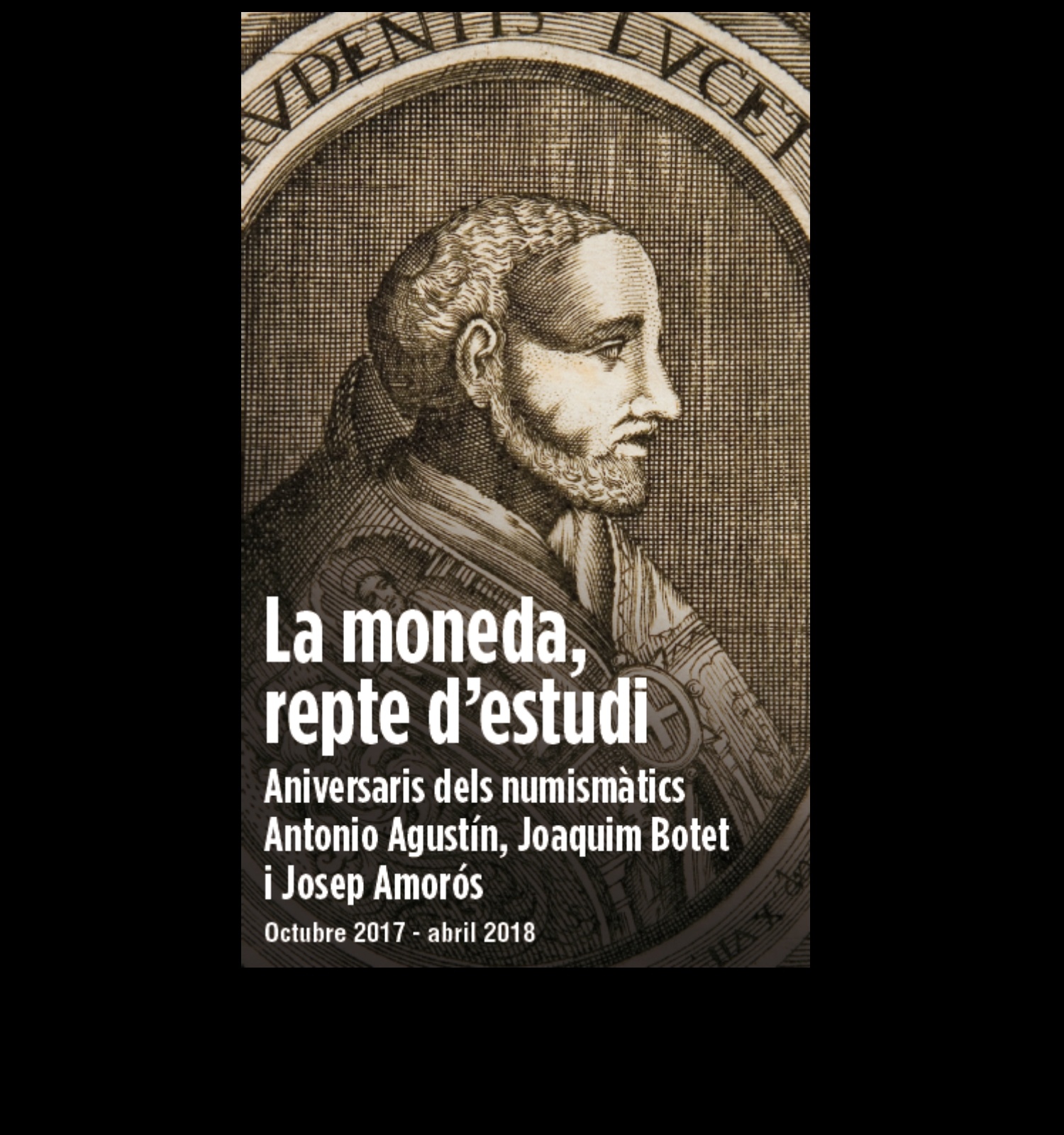Coinage, the challenge of studying
Coinage, the challenge of studying
The scientific and humanistic disciplines are organized, in large part, thanks to the efforts of scholars and their historiographic work. in their time, very influential numismatists well behind their own realms. And in the case of numismatics, three prominent figures that in their time were very influential behind their own realms.
- the archbishop Antonio Agustín (?, 1517 – Tarragona, 1586) was one of the humanist founders of numismatics as a discipline.
- the politician Joaquim Botet i Sisó (Girona, 1846 – 1917), whose valuable collection is preserved in this museum, and whose indispensable three volumes on Catalan coinage were published between 1908 and 1911.
- professor Josep Vicenç Amorós i Barra (València,1887 – Barcelona, 1970) who was the first director of the Numismatic Cabinet of Catalunya, from 1932 to 1957.
The earliest numismatists, in order to be able to study coins and share the knowledge they acquired, had to put together, and then share, the fine collections of coins which, in some cases, then permitted the opening of the first museums. They had to invent methods of analysis and description for the coins they had collected. That is, they had to weigh, to measure, to describe, to classify and to catalog them into notes and records. This point marked an important juncture in the essential search for suitable methods of reproducing the coins, to facilitate understanding and dissemination of them as precisely as possible. This exhibit seeks to portray this difficulty and to reveal the intense process that became more than a state of mere description: of suitable drawings, for print, of the original pieces, and of the casts, in plaster or other materials, that permitted them to be sent to and exchanged among specialists and thus overcome the impossibility of direct observation of the coins.
Finally, we emphasize the dispersal of images included in printed books thanks to the evolution of various techniques of reproduction. These began with woodcuts, or engravings in wood, from the Medieval tradition; followed by copper-plate engraving, in the 17th and 18th centuries, and into the 19th century; the evolution of such techniques as lithography, invented in 1798; and, finally, arrived at the introduction of photography and its reproduction in the printed book. This process continues today with the evolution of integrated systems of documentation of the coins in the museum and beyond, with the numismatic forums of the internet, in which are collected digital photographs as well as 3-D reproductions.














